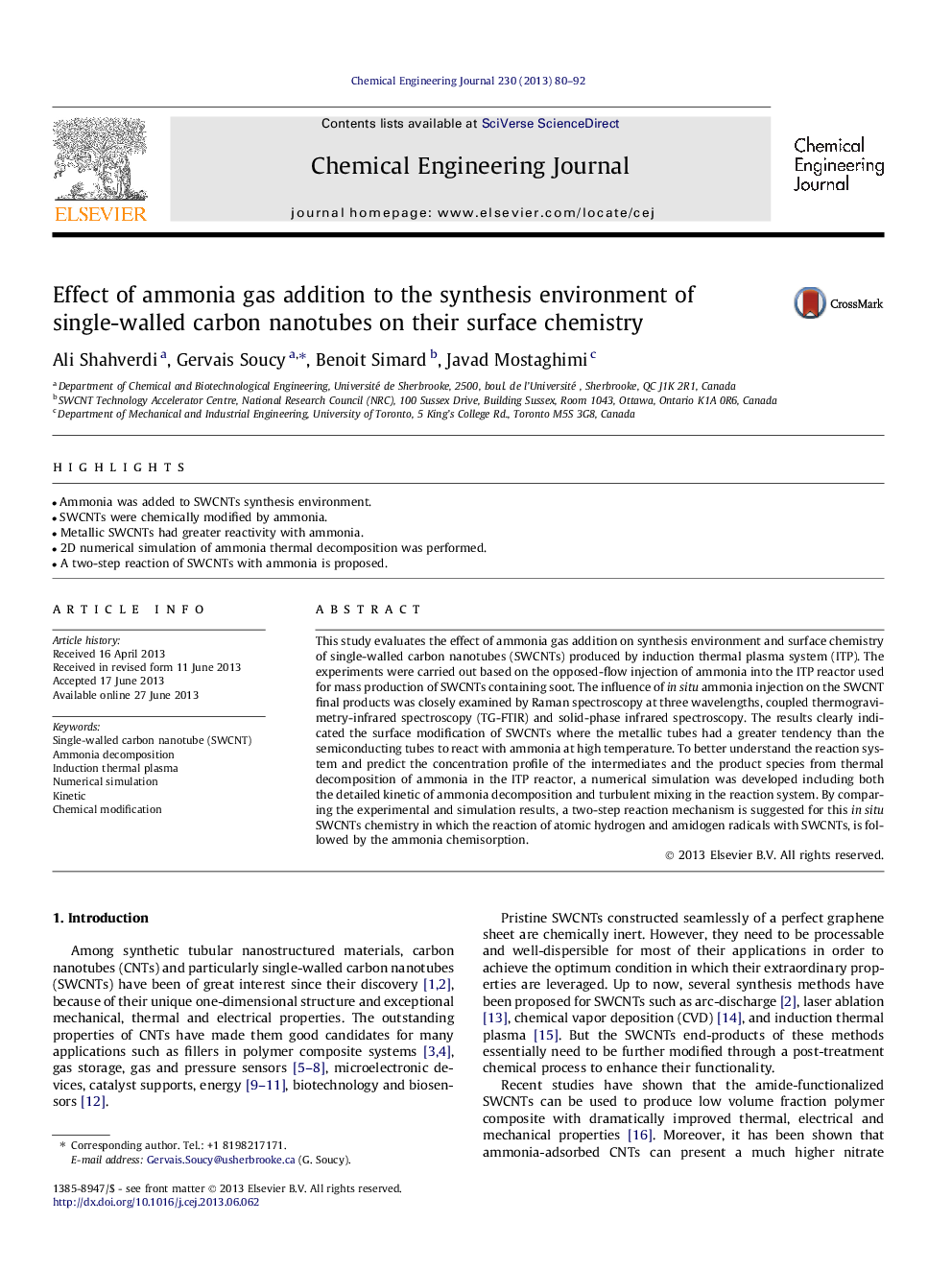| Article ID | Journal | Published Year | Pages | File Type |
|---|---|---|---|---|
| 148417 | Chemical Engineering Journal | 2013 | 13 Pages |
•Ammonia was added to SWCNTs synthesis environment.•SWCNTs were chemically modified by ammonia.•Metallic SWCNTs had greater reactivity with ammonia.•2D numerical simulation of ammonia thermal decomposition was performed.•A two-step reaction of SWCNTs with ammonia is proposed.
This study evaluates the effect of ammonia gas addition on synthesis environment and surface chemistry of single-walled carbon nanotubes (SWCNTs) produced by induction thermal plasma system (ITP). The experiments were carried out based on the opposed-flow injection of ammonia into the ITP reactor used for mass production of SWCNTs containing soot. The influence of in situ ammonia injection on the SWCNT final products was closely examined by Raman spectroscopy at three wavelengths, coupled thermogravimetry-infrared spectroscopy (TG-FTIR) and solid-phase infrared spectroscopy. The results clearly indicated the surface modification of SWCNTs where the metallic tubes had a greater tendency than the semiconducting tubes to react with ammonia at high temperature. To better understand the reaction system and predict the concentration profile of the intermediates and the product species from thermal decomposition of ammonia in the ITP reactor, a numerical simulation was developed including both the detailed kinetic of ammonia decomposition and turbulent mixing in the reaction system. By comparing the experimental and simulation results, a two-step reaction mechanism is suggested for this in situ SWCNTs chemistry in which the reaction of atomic hydrogen and amidogen radicals with SWCNTs, is followed by the ammonia chemisorption.
